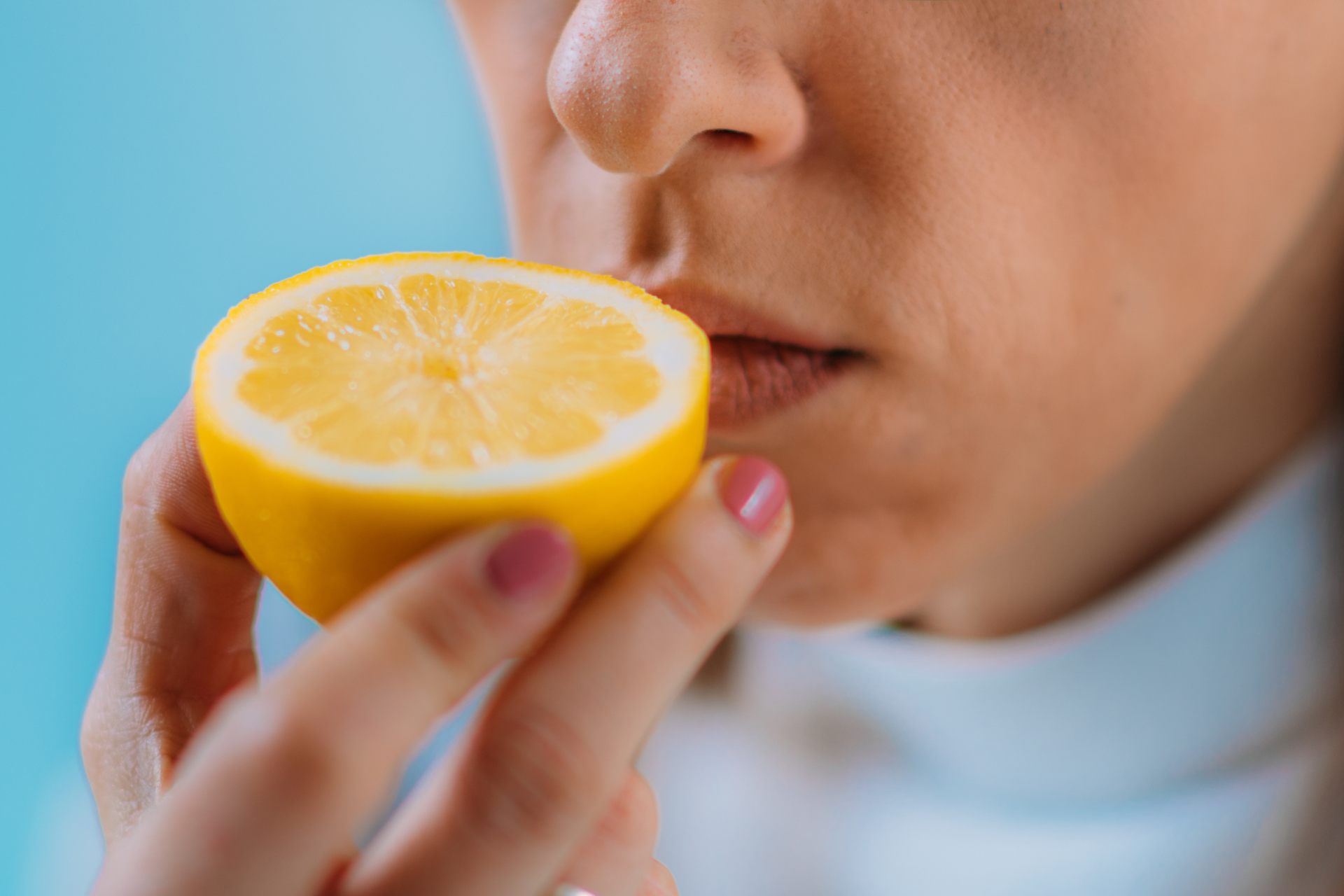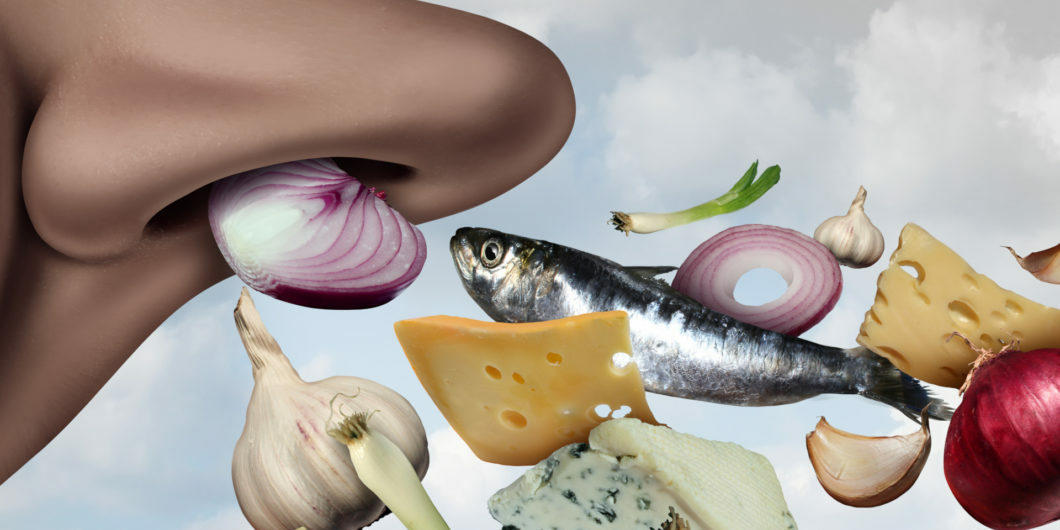Product development • Imagine that you could reduce sugar and retain the sweet taste without sweeteners. It might be possible. As you know, the taste of food depends not only on what the mouth senses but also scents reaching the nose. Can that be used to mask reduced sweetness? Let’s find out
Sales dropped for Campbell Soup Company when they in 2007 reduced the amount of salt in their soups from about 800 mg per serving to as little as 480 mg in some products. To pick up sales, they had to increase the amount of salt again – to 650 grams. A news that caused the share to rise.
There are plenty of similar stories. Many consumers want to eat healthier. But not at the expense of taste. This is a dilemma that the industry is grappling with: How do we make food healthier without losing taste. The solution may be in the nose. In any case, there is research that shows that possibility.
Taste, smell, mouthfeel
There are three factors that affect how we experience food: taste, smell and mouthfeel.
Taste. When we put food in our mouths, enzymes in the saliva begin to break it down, releasing flavours that are in the food. Via the saliva, these flavours get in touch with the taste buds. We have between 5,000 and 10,000 taste receptors. They send signals to the brain that make us perceive the taste.
Smell. The number of taste receptors may sound like a mouthful (pun intended), but it is nothing compared to the 100 million olfactory cells in the nose that react when they are reached by different odor molecules. They also send signals to the brain.
Mouthfeel. A third factor that affects how we perceive food is what we call mouthfeel. It summarizes the food’s structure and consistency but also how the food affects the mouth via heat or cold or other experiences such as tickles from carbon dioxide.
It is the combination of taste, smell and mouthfeel that gives us the total experience.
To put in another way: The taste isn’t in your mouth. Nor is it in your nose. It’s in your brain. That’s where all the signals come together and form an experience of taste.
Sweet tomatoes
For a long time it was thought that basic tastes, such as sweet and salty, were mainly perceived in the mouth, while the sense of smell played an important role for more complex flavours such as coffee and alcohol. Recent research shows that even sweet and salty are affected by aroma.
A study that showed the importance of the scent for us to experience sweetness was done on tomatoes. The researchers tested 152 different types of tomatoes and discovered that tomato varieties that contained the same sugar content could be perceived as different sweet. It was the scent that made some varieties feel sweeter than others.
Another study was done by Robert Sobel, who after reading Taste, Aroma, and the Brain decided to investigate how scents can ‘trick’ the brain into perceiving foods as sweeter. Among other things, he tested vanillin and discovered that subjects are experiencing foods that smell vanillin as sweeter than they actually are.
Robert Sobel says that the smells need to be barely noticeable. The brain still perceives them and makes them a part of the taste experience. He calls a such scent for phantom aroma.
Sweet as vanilla
In Denmark, researchers have recently studied which smells make us perceive food as sweeter.
They tested five different scents: vanilla, honey, banana, raspberry and elderflower. Although all five were considered sweet in a Danish cultural context, the subjects experienced two of the aromas as sour: raspberries and elderberries. The smell of elder was the one that was perceived as least sweet.
The smell of vanilla, honey, banana was experienced as sweet. The smell that was perceived as most sweet was vanilla.
The smell of vanilla made the subjects experience the samples as much sweeter. In fact, samples with a medium concentration of sweetness were perceived as sweeter than samples with a high concentration of sweetness, if they came with a vanilla scent.

Sweet aromas
Although most people would do well to consume less sweet, salt and fat as most consumers are unwilling to reduce intake, as it makes the food taste less. When they buy foods with a lower content of sweet, salt or fat, they often add this when cooking, argues Thierry Thomas-Danguin, head of the Centre for Taste and Feeding Behavior in France (CSGA).
His team has developed a method for screening, selecting and identifying odorants that are associated with taste.
First, they used an olfactometer to allow a test person to smell fruit juice in a controlled way. The subject is allowed to describe how sweet, salty, bitter and sour they experience the odour. Thereafter, the experiment is repeated, but now a scent is added by gas chromatography-olfactometry. The subjects are allowed to re-describe the experience of the four basic tastes.
In this way, it has been shown that ethyl butyrate and three other tested esters increase the experience of sweetness by 20 to 70 percent.
Researchers like Thomas-Danguin believe that sugar can be reduced, with no loss in taste, with more than 30 percent by just working with odors.

Way forward
Consumers want to eat healthier, but opt out of foods with less salt, sugar or fat if the reduction affects the taste experience.
In case of sugar reduction, a solution is to add a phantom aroma that gives a sweeter experience. For example, vanillin.
Another solution is to reduce by stealth. Heinz has done that. Without making much of it, they have gradually reduced added sugar by 34 percent in their classic tomato soup. They also gradually reduced the salt in their ketchup by letting test panels test how much salt they could remove each time. Read more in this column.
If you want to bang the big drum, you can instead do it for what replaces what you reduced – if it is something that consumers experience as positive. If sugar is replaced with sweetened fibres, you can emphasize that the food or drink is fiber-enriched instead of boasting that it is sugar-reduced.
Or why not do both? Both gradually reduce added sugar without making a big deal of it and add phantom aroma that increases the perceived sweetness.
Please, share this article if you liked it.
[et_social_share]










